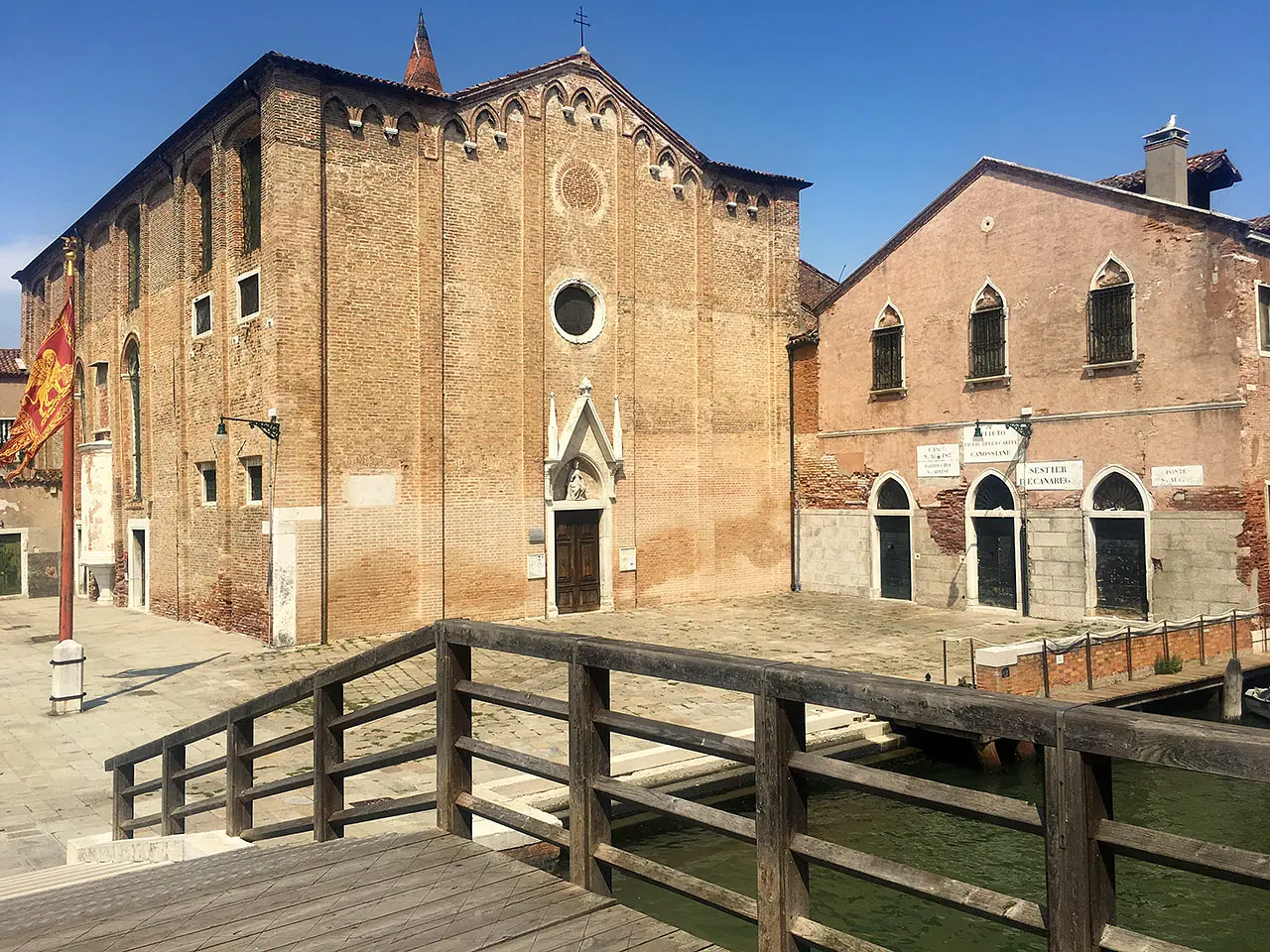SHARRYLAND


Where is

What it is and where it is
To the eyes of those arriving from the wooden bridge, after the narrow perspectives of the calli, Sant'Alvise appears as a large building that someone even larger has forcibly pushed to the edge of a field, as if it were better suited to serve as a "wall," rather than as a "church," in the center of the space that now seems temporarily empty. And indeed, in the same way as the church that gives it this bizarre name, the field, too, seems to have been confined to the Venice hilltop, the North Cape of the island. Around it there is no one. To the left, far away, you can sense the swarming under the cranes of Porto Marghera. And you can barely hear the cries of the boatmen on the canals and the seagulls on the altanas.
Why it is special
Under the heading "Gothic church," many of us first picture the tall spires and narrow stained-glass windows of the cathedrals of France: certainly not a mass of somewhat banal bricks like this one, slendered by a few pilasters, whitened by the portal (in the usual Istrian stone) that pierces its façade-it seems-to the charity of the child who drew the design. But the judgment is too harsh. Austere yes, but very elegant Sant'Alvise presents itself. Let's at least say that the architect did not "shine" in the practice of light engineering: inside, the canvases on the walls are bathed in half-light because the timid windows are not enough to illuminate the concert of colors. Let's put it this way, then: the Gothic French launched the excellent idea of raising the ceilings, but we, Italians, were too attached to our paintings to replace them with the necessary points of light to make them visible. To solve this darkness, at Sant'Alvise, two centuries later, they painted the blue sky directly on the ceiling: Pietro Antonio Torri and Pietro Ricchi, a vision of the heavenly Jerusalem so that night would never fall on these sacred spaces.
Not to be missed
At the end of the 15th century, the church of St. Alvise acquired three important relics of the Passion of Christ, which inspired, in the 1830s, as many canvases to the master painter of the time. Originally parts of a single triptych, Giambattista Tiepolo 's Flagellation, Ascension to Calvary and Coronation of Thorns are part of the number of masterpieces that clutter Venetian chapels, and whose existence we would be unaware of, were it not for the captions beside the entrance doors informing us. The major painting, in particular, dramatic, grandiloquent, in the choice of hues and the agreement of tones, in the melting of lines to form volumes, in the arrangement of the figures, all contorted and contrite, demonstrates-and it is not hard to believe-that its artist's passion for melodrama, so fashionable in eighteenth-century Venice.
A bit of history
Legend has it that it was the saint himself, Lodovico da Tolosa, who pointed to the site of the foundation, in 1388, of his Venetian church. But due to the fact that he appeared in a dream to the very noblewoman Antonia Venier, and not to another Florentine or Neapolitan, his name became Alvise, the most Venetian of them all. Saint Alvise? Are we facing a new "san Zanipolo," the mutant saint, son of Giovanni-Zuane and Paolo-Polo? No, this time there is no imaginative ninzioleti (lagoon "road" signs) painter involved. Alvise is the stuff of philologists; it's what they call the Ludwigs and Louises in Venice.
Trivia
Affixed to the counter-façade of the church are eight painted tablets, signed "Vittore Carpaccio." Him himself? The master of the Dalmatian School of St. George and the Stories of St. Ursula? No, let's rather say a Lazzaro Bastiani in an excess of self-esteem. It may happen, however, that you come across a work here by the painter who gives his name to the street of your house, as happened to the writer, who lives on P. Damini Street, and by Pietro Damini-not a mediocre artist but not one for the Grande Galerie either-was able to see a St. Louis consecrated bishop of Toulouse, hanging on the right wall, just below the gallery of grated windows, to which the nuns of the adjacent convent have looked out for centuries.
Enter the Map of Italy's Undiscovered Wonders and find treasures where you least expect it... Inspire, Recommend, Share...
The Map thanks:
Enter the Map of Italy's Undiscovered Wonders and find treasures where you least expect it... Inspire, Recommend, Share...
Where is





